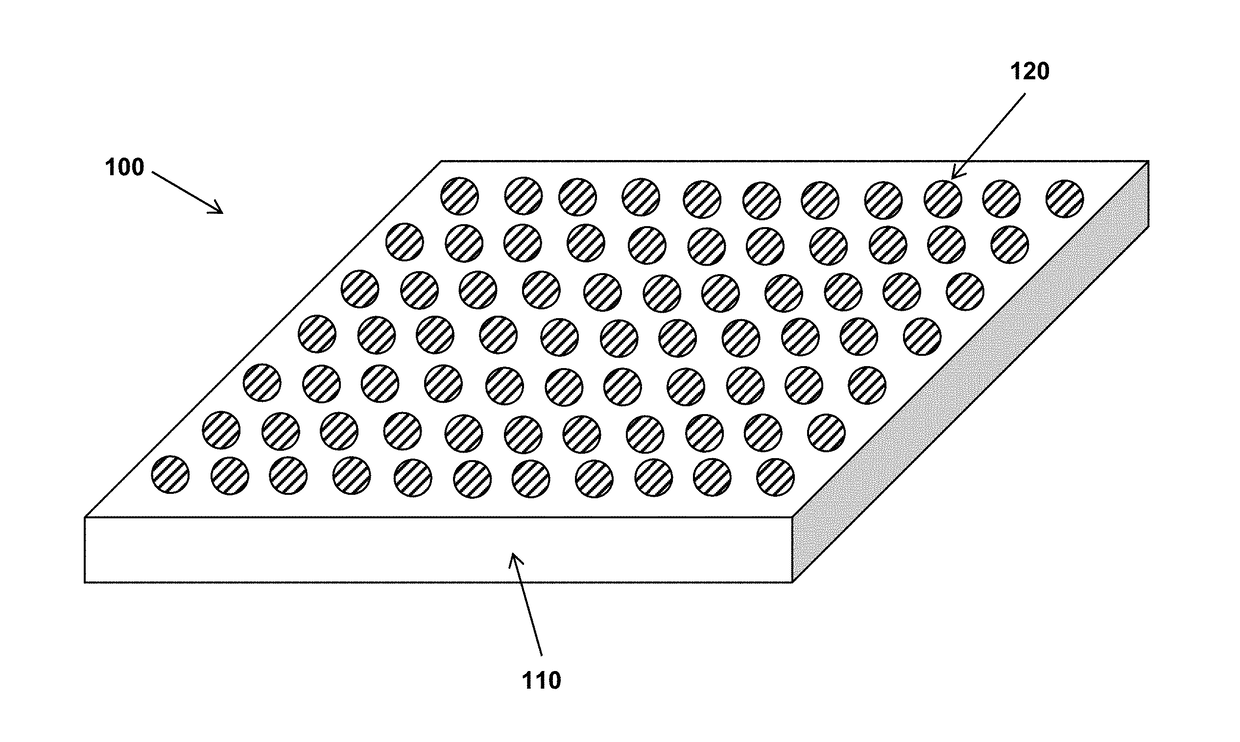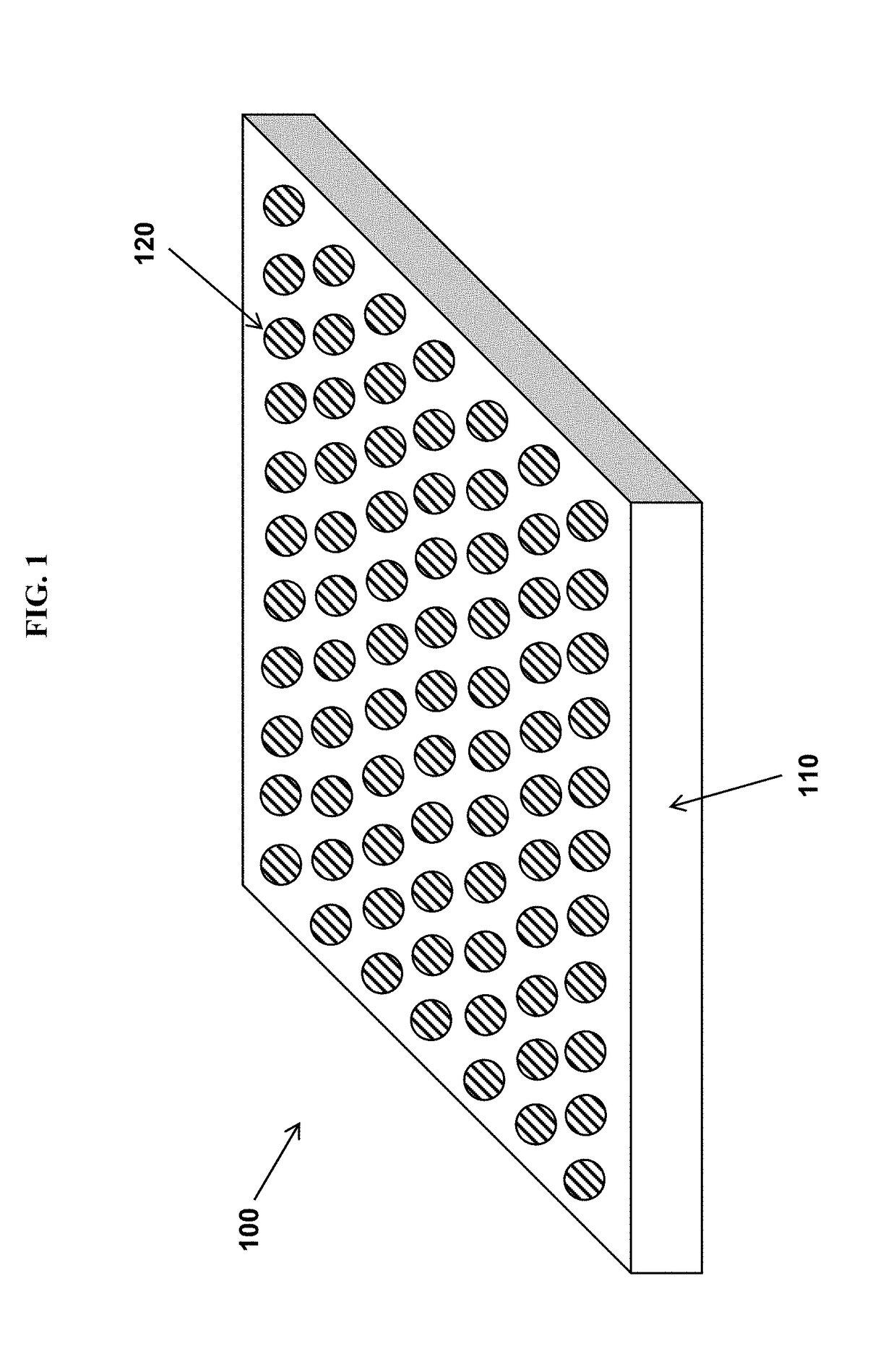Reversible, chemically or environmentally responsive polymers, and coatings containing such polymers
a technology of chemical or environmental responsiveness and polymers, applied in the direction of coatings, polyurea/polyurethane coatings, etc., can solve the problems of material being more vulnerable to creep under stress, reducing the number of crosslinks, and no longer being reworked
- Summary
- Abstract
- Description
- Claims
- Application Information
AI Technical Summary
Benefits of technology
Problems solved by technology
Method used
Image
Examples
examples
[0236]Materials.
[0237]Poly(ethylene glycol) (PEG) with molecular weight (Mn) of 3,400 g / mol, 4,4′-methylenebis(cyclohexyl isocyanate) (HMDI), 1,4-butanediol (BD), dibutyltin dilaurate (DBTDL), and 2,2-bis(hydroxymethyl)propionic acid are purchased from Aldrich. Fluorolink materials are purchased from Solvay Specialty Polymers. All chemicals are used as received without further purification.
example a
ymer Control
[0238]Fluorolink D4000 perfluoropolyether (4 g) is charged to a vial followed by HMDI (0.786 g) and dibutyltin dilaurate (0.02%). A small PTFE-coated stir bar is introduced and the vial is placed in a 100° C. oil bath to stir. The reaction is vortexed aggressively after achieving a temperature of 100° C., and then left to stir for 1 hour. After this step, the resin is poured into a 3″×3″ PTFE mold to flash off solvent and cure the film at room temperature overnight.
example b
stic Polymer without Ionic Species
[0239]Hydroxyl-terminated poly(perfluoropolyether) (9.00 g, 3.73 mmol, Fluorolink 5147x) is placed in a 3-neck roundbottom flask that contains an inlet for argon and equipped with an overhead stirrer (Teflon shaft and blade). While stirring, 4,4′-methylenebis(cyclohexyl isocyanate) (4.89 g, 18.66 mmol) is added to the solution and the flask is placed in an oil bath at 100° C. Dibutyltin dilaurate (0.02 wt %) is then added to the solution using a micropipette and the polymerization reaction is allowed to proceed.
[0240]After 1 hr, the prepolymer is then allowed to cool down to room temperature. The prepolymer is diluted with tetrahydrofuran (15 mL) and placed in a centrifugal mixer (FlackTek DAC 600).
[0241]In a separate vial, chain extender 1,4-butanediol (1.35 g, 14.98 mmol) is weighed and diluted with tetrahydrofuran (0.5 mL). The two solutions are combined in a centrifugal mixer and mixed at 2300 rpm for 15 seconds. The polymer is cast from solutio...
PUM
| Property | Measurement | Unit |
|---|---|---|
| surface energy | aaaaa | aaaaa |
| elongation | aaaaa | aaaaa |
| wavelengths | aaaaa | aaaaa |
Abstract
Description
Claims
Application Information
 Login to View More
Login to View More - R&D
- Intellectual Property
- Life Sciences
- Materials
- Tech Scout
- Unparalleled Data Quality
- Higher Quality Content
- 60% Fewer Hallucinations
Browse by: Latest US Patents, China's latest patents, Technical Efficacy Thesaurus, Application Domain, Technology Topic, Popular Technical Reports.
© 2025 PatSnap. All rights reserved.Legal|Privacy policy|Modern Slavery Act Transparency Statement|Sitemap|About US| Contact US: help@patsnap.com



